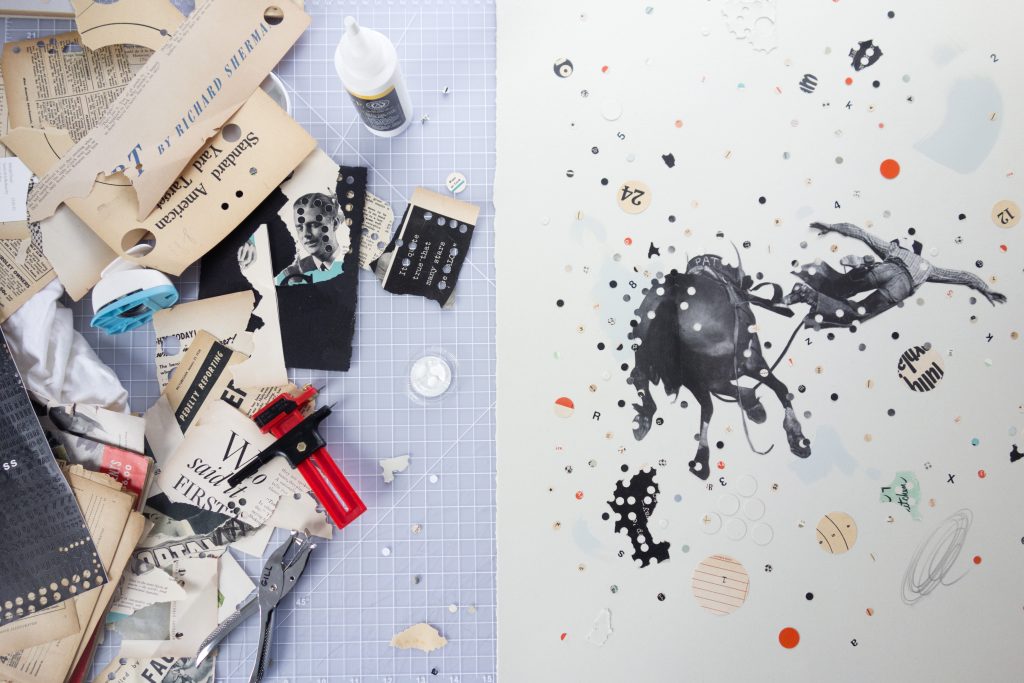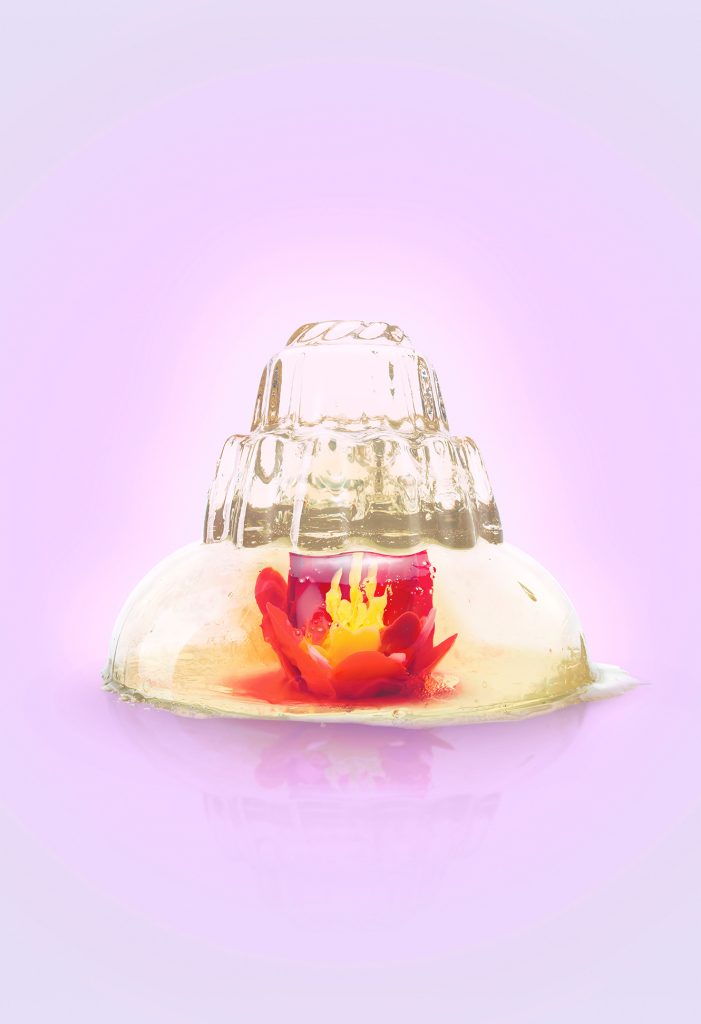Photographer + Gallerist Theo Coulombe’s Dreamlike Landscape Imagery
In Sharon, Connecticut, a fine artist photographer captures pastoral beauty

In the idyllic town center of Sharon, Connecticut, photographer and gallery owner Theo Coulombe‘s Standard Space welcomes art-curious residents and tourists seeking a side of imaginative inspiration served with the region’s pastoral beauty. Coulombe is a welcome fixture in an ever-growing art scene, bolstered by a continued influx of New Yorkers into the area. Standard Space (which he founded in 2017) exceeds the expectations of a gallery situated in the Connecticut countryside, due to Coulombe’s desire to present diverse, emerging and mid-career artists. Though the next exhibition Which Bridges to Cross and Which to Burn, running 28 May to 2 June and guest curated by Douglas Everett, pairs the work of performance artist Ayana Evans with that of multi-disciplinary artist Tsedaye Makonnen. The current digital one, Landscapes, takes a moment to shine a light upon Coulombe himself.
We spoke with the artist to learn more about his relationship to landscape photography, the process he developed over the years, and how his time as a park ranger contributes to his photography.

“The Landscape” factors into many art forms. What do you believe makes a good photographic landscape?
Landscape heals me and fantasy can fill me with what I think the landscape means, but my—or our—will to change it or give it meaning will always be undone by the landscape itself. Perhaps that’s why artists are attracted to it as metaphor. When I was a kid Terrance Malick and Stanley Kubrick nailed me with landscape. Kubrick with Barry Lyndon and Malick with Thin Red Line or Days of Heaven. Their observations of the landscape as historic cue and subtext to the narrative is sublime, plus they’re moving embodiments of the history of landscape painting and photography. My landscapes are an attempt to capture this kind of quiet awe at even the simplest of scene or views that my 8×10 camera connects me with.

How do you know when you’re seeing something special?
Sometimes I see it right away, like when you drive east over a ridge line on I-90 and see the Bonneville Salt Flats, like I did when I drove across America with Shantell Martin and Laksmi Hedemark. We crested and in one voice yelped, “Ahhh!” We all started laughing. It was a rush that still happens when I’m alone. Over the pat two months I’ve been obsessed with a dirt tract called Flint Hill Rd in Amenia, NY that was an “Ahhh” moment over a year ago… That on site I see as an “image in fourths”—literally four images of the same scene. Other views sneak up on me and don’t show until the conditions, mostly weather and sun or lack of sun. The sun is a minor character and in 90% of days that are “perfect days,” I’m not interested. Spring and fall offer the most variety of weather conditions.

Why you are shooting on 8×10 ? How does that impact your work? What does it offer you?
8×10 is the most deliberate action I can take in realizing a photograph as compared to digital 35 medium format or their equivalent in film. I do employ these formats for other projects, but my instinct is the 8×10. My interaction with that format and the Deardorff camera in particular comes down to basics. You become part of the camera. You use a dark cloth and look at the ground glass on the back of—not through—the camera. You become an interior of the eye. You’re upside down and backward. You’re forced to realize the composition and the groundlessness is the canvas. On the other end of the process, the 8×10 film size has a potential to record minute details and, in the absence of details, amazing tonalities.

Can you tell me about the personal development of your process?
When I started as a student, my teachers drilled me in photomechanical and photochemical processes, understanding light and color, darkroom technique and history. It was incredibly useful and a bedrock of my skill, but I read this as a call and adherence to perfection—or at least I thought I needed to be perfect. Early on, I judged myself very harshly. I would make these photographs with the 8×10, process them in my Brooklyn darkroom and then look at them and reject them based on a scratch or chemical stain or some such nonsense and completely disregard the image itself. I understood the process but not the language of photography or landscape. Good thing I never threw the negatives away. Now I select what stages in the process are important and disregard the imperfections.

Do you approach an urban landscape in a different way than a rural one?
Yes and no. In both cases I understand what I want when I first see the view. Usually there are elements that I have to stop and recognize as the triggers, such as foreground elements and framing devices that create depth and scale, time of year and day direction of the compass. Most important to me is the weather. My urban landscapes from the ’90s are stark, early morning affairs with architecture, streets and decay—really just human history on a bright clear morning, empty streets. I had the privilege to teach photography at New School’s Eugene Lang College and the darkroom I taught in was apparently the same darkroom Bernice Abbott taught in. I admire her urban landscapes, old Penn Station, West Village all over, and the striking thing is the lack of human presence.

Can you talk to me about your time as a park ranger and how that influences your work?
I was living in Ithaca, New York renovating houses when I read about a job that would send you to a national or state park to work for the summer. My truck had broke down and the economy was in a slump, so construction employers were only hiring carpenters with families. I applied for a job in Maine on the Appalachian Trail. I got the job and after the first summer—which kicked my ass—was again offered the job to come back but now working directly for the Maine Conservation Corps and the Maine Appalachian Trail Club. The following year I was working for the Maine Department of Parks and Recreation but really the same people. It was a backdoor to being a park ranger and we were always working on the
Appalachian Trail. Our job was to rebuild the tread way of the trail, which we did: we carried all of our tools, food and gear to preselected, secret camp sites. We built new and closed the old.

Our official title was “Trail maintenance and Backwoods Communication,” aka “you’ll never see anyone ever again.” Because it was known that I loved photography and carried a camera with me all the time, my bosses expanded my designated title to Crew Foreman and Photographer. Thing is, when you work on a trail, it’s a freaking long, linear path that’s a few feet wide so the photos tend to portray peoples butts. However, that landscape was awe inspiring to a 20-something and more often than not I found myself scurrying up over a tree line to photograph an early sunrise or capturing the beauty of a friend standing in a very remote, glasslike, glacial tarn in the late afternoon. That was our only form of bathing. So much of that time I spent not yet understanding how landscape kind of freed my soul, let “myself” drop away and, at times, scared the crap out of me.

After spending 23 years in Brooklyn, can you tell me what you find unique about Sharon, Connecticut?
Sharon and the Northwest Corner has proximity to the city, very close friends, and (had) cheaper rents than the east end but no ocean, which is kinda made up for by this undulating, generations old farming landscape… Like a pocket of quiet drama. That I bought a house with a storefront for 300% less of what it would have cost me for a studio [in Brooklyn] blows my mind. Plus I could open a gallery—Standard Space was born out of circumstance and a need to be connected to the life I lived for 23 years in Brooklyn. Sharon allows that connectivity… Jasper Johns made this possible by his very presence. Sharon is the option I chose and I think I chose well, it’s landscape fits my personality.

Can you tell me about Standard Space and its mission?
I needed a space that would allow me to build a dialogue with the Sharon community and the community I left behind in Brooklyn and in NYC, in general. My life in the art world and my practice as an artist allowed me the luxury of deciding to open a gallery. Developing the idea was easy because the physical framework, the space itself, was there so it was a standard gallery space… Standard Space is also a term used to describe a minimum space to work in. When I asked an arts producer friend in Finland what she thought she said, “It’s very ’90s sounding and people are nostalgic for the ’90s.”

Initially I curated the exhibitions but I’ve been much more excited to have curators take some control, letting me develop my own practice. It’s working. Our mission is simple, to feature artists and curators in mid-career and to give emphasis to under-represented groups in the art world. I really try to keep it simple.
Images by Theo Coulombe












